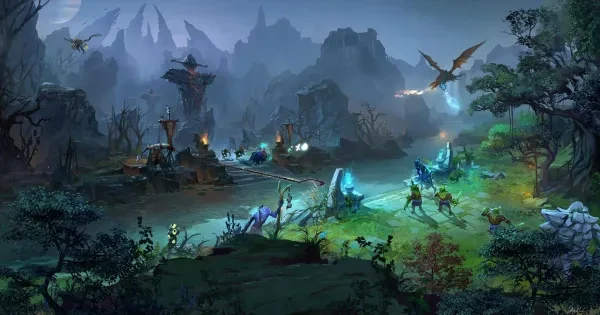Using Video Games to Learn Makes Education Fun!
Using video games to learn in the classroom and at home can be a challenge at first, but it can motivate reluctant students in amazing ways. If you’re a parent of children these days, you know the draw video games have on kids. Girls or guys, old or young, you’ve probably heard the pleading that comes close, terribly so, to crossing over into some obsessive unhealthy territory.
Unless you’re some sort of superhuman, or have children straight out of a 1950’s Sitcom, you’ve probably also stumbled over perhaps the biggest hindrance to education – boredom. Uncontrollable yawns and an ugly black pit that swallows attention spans and motivation like a sink hole. In my admittedly limited experience as a parent and school volunteer, I’ve found one thing and one thing only consistently plugs boredom: using video games to learn.
Yes: use children’s love of video games to your advantage and banish their boredom. My son doesn’t much enjoy when I sit him down to practice math with flash cards, but when get in front of a computer or video game console, learning is the greatest thing in the world.
Using video games to learn does take a little practice. The first time I tried to implement an educational video game session at my son’s school, the classroom discipline very quickly deteriorated. Honestly, I think they knew something was up; there was an excited undercurrent from the moment they returned from recess. Can kids smell the high-grade plastic like dogs smell bacon? Whatever the case, when Mrs. Holmes called for an orderly group around the classroom television, something along the lines of a rugby scrum broke out for the best seats.
Despite this initial setback, the students eventually settled in and have since learned to treat using video games to learn as another part of their education, albeit a particularly fun one.
The format we found to work best is to set up a number of “stations,” to divide the children into small groups (definitely splitting up the trouble-makers — thick as thieves, they are), with each group spending about fifteen minutes at each station. The key is to make as many of the stations as “authority independent” as possible — the less time you spend explaining rules, breaking up fights, or answering silly questions from stations One through Three, the more time you’ll have for some intense teacher- (or teacher aide-) student interaction. Using video games to learn, you’ll come to find, makes students very independent for those 15 minutes or so.
Perhaps the only strain that using video games to learn can create is also a very common one amongst younger students: no one wants to share. Most classrooms are limited in televisions and computers. I was able to alleviate some of the strain in my son’s classroom by donating an nice CRT television that wasn’t being used much in my house. If you’ve any similarly seldom-used televisions, donating them (and anything else of value!) is a great way to help your offspring’s education. If resources are limited in your child’s classroom, students will need to be motivated to share.
Motivating can be as simple as asking the students who are waiting for their turn with the console or computer to cheer on their peers as they play. Or, ask each student to analyze his or her “partner” to see if there are ways he or she could improve her score, and make a show of compiling this data in a week-ending analysis. Perhaps the simplest solution is to have them bring along a book or a lesson to help distract them while they wait. Though you can always resort to taking away privileges, I’ve found positive reinforcement to be stronger than negative.
Many learning games include “teacher-only” modes that break down each student’s performance, a perfect tool to see which areas of study each student might need particular help with. When you’re using video games to learn, you might discover some students doing better in subjects they previously had a little trouble with; all too often, it’s not a student’s intelligence or ability to understand a concept, but the way in which the concept is explained.
Making learning fun means students will feel good about their education. Using video game to learn can make trouble students blossom into life-long learners. Sometimes, all it takes is a little change like a learning video game to make them see the value in education.
And as always: get involved with your child’s education. The greatest teachers in the world using video games to learn can’t motivate a student whose parents don’t show them the value of learning.








